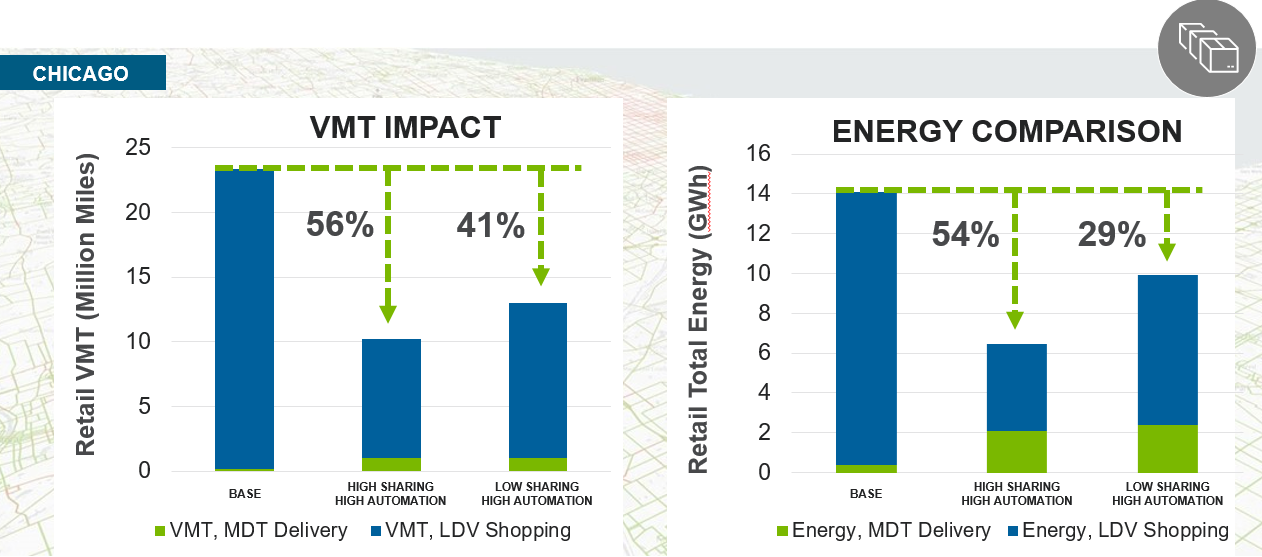E-Commerce
See how increased e-commerce can lower overall system vehicle miles traveled (VMT) and energy consumption.
E-commerce is expected to generate a large increase in last mile delivery of goods. However, after accounting for shopping trip reductions and vehicle technology changes, simulations show that there will be an overall net reduction in VMT (34 to 56 percent) and energy use (29 to 54 percent) across the Chicago metropolitan area. The e-commerce delivery rate is assumed to increase from one delivery per household per week in the current baseline, to three deliveries per week in the near term, and five deliveries per week in the long term.
Because the average shopping trip is seven to eight miles, and shopping trips currently constitute approximately seven percent of total VMT, there is substantial potential for VMT and energy to decrease if shopping trips are replaced by deliveries.

If household e-commerce deliveries triple in the short term, compared to the base year, retail-based VMT could decrease by 31 percent, and retail-based energy consumption could decrease by 39 to 49 percent. Over the long term, if household e-commerce deliveries were to grow to five per week, retail-based VMT and energy consumption could decline by 36 to 50 percent and 54 to 72 percent, respectively. The VMT savings are even greater when comparing future scenarios to their respective baselines.

For additional information, you can read and download the SMART Mobility Modeling Workflow Development, Implementation, and Results Capstone report.